It can be difficult to define the first Forum in Ostia. For example, the cases with Alba Fucens, Cosa, Paestum and Minturnae is that the Roman colony displaced earlier Etruscan or Italic populations and incorporated a new and distinctive pattern on the site. The sites were subject to constant modification and reconstruction throughout their history, which therefore poses some difficulties when trying to discern the earliest phase of a forum. Hence, when the site of the Forum in Ostia has its origins in the late 6th or early 5th century BCE, the site has undergone several considerable, and sometimes wholesale, reconstructions.
In the attempt to define the first layout of the Forum, we have to consider when we are dealing with a Forum, and ask questions such as “What does a forum comprise?” and “What kind of political monuments does a forum require, if this is definable?” We have to assume that a forum was not just an open plaza, but a plaza surrounded by or laid out in connection with certain public buildings. This is an important step towards understanding the early phases of Ostia’s Forum and city centre. When dealing with Ostia, Rome’s first colony that initially was founded as a military fort, a castrum, it is important to find out, when this castrum transformed into the Forum and ultimately became the centre of the city, and what components it comprised of at that time. Through the archaeological records of the excavations in the first half of the 20th century combined with the excavations and the newest 3D- and geophysical analyses conducted by OFP, it is possible to analyse the city centre in a coherent context, and thus interpret the individual findings and monuments. By treating these findings in a coherent context, a first forum of Ostia can be established. The built environment would thus allow us to interpret on the early phases of Ostia as a city, even though it has been presumed that because Ostia was largely controlled by the senate of Rome, the city did not have and might not need public buildings such as a basilica and a curia until the time of Domitian. Nevertheless, this assumption will be disputed in this project.
In Ostia, we are fortunate to have an inscription mentioning a forum, which has been dated to the first half of the 1st century BCE. The inscription mentions a certain Lucilius Gamala, who sponsored the construction and repair of several temples, including the famous Temple of Vulcan. He did also sponsor a street and a marble tribunal. The important information here, is that the street and marble tribunal were both constructed in the Forum. We might there assume that the Forum existed, when Gamala sponsored the construction of the abovementioned structures, and we are therefore dealing with a Forum in Ostia in at least 50 BCE.
The Republican period in Ostia and especially in the Forum’s area is covered by the Imperial monuments. This thus hinders a more complete picture of the Forum, but it is not impossible to create and analyse a Republican forum in Ostia. There are Republican remains still buried under the Imperial structures, with some of them being directly accessible and others accessible through geo-physical surveys and archival studies. One of the most striking Republican remains easily accessible is the western podium wall of the smaller of the two Late Republican temples on the northern half of the Forum (Temple T5).
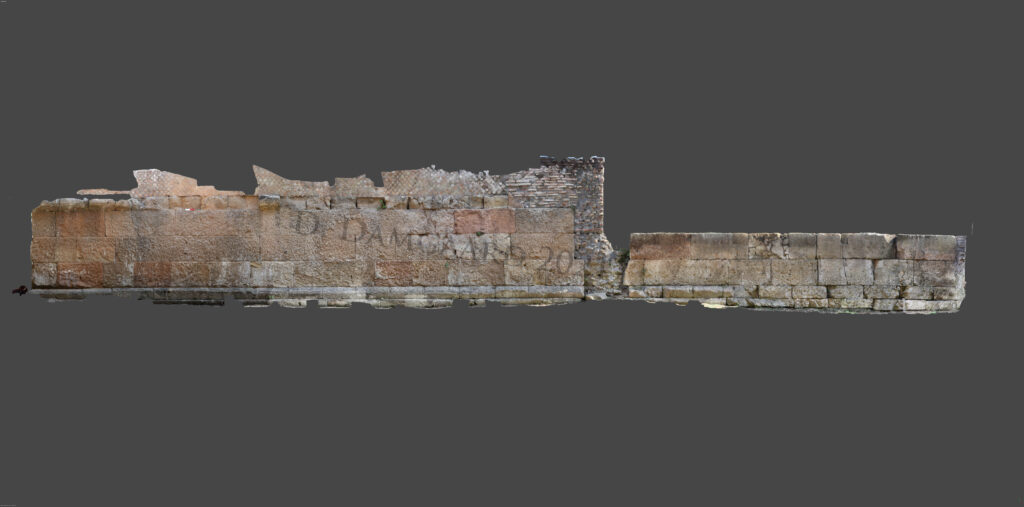
Excavations conducted in the area in the 1940’s did also reveal parts of the eastern podium wall. However, this wall was only preserved to its base, and since it is located directly in front of the Hadrianic Capitolium, the remains were covered along with the remains of the Late Republican Capitolium (Temple T4). Based on the temple plan and the podium height, it is possible to make a reconstruction, since this can be used to calculate the remaining measurements of the temple. In continuations to this, a Corinthian tuff capital has been associated with the temple.

A 3D-video has been made of the recontructed temple, where it appears in its original context.
Just next to Temple T5, the so-called Curia is located. Part of the eastern wall is built in opus reticulatum. Based on the style, the work is to be dated to the second half of the 1st century BCE. It was later incorporated into the Imperial monument.
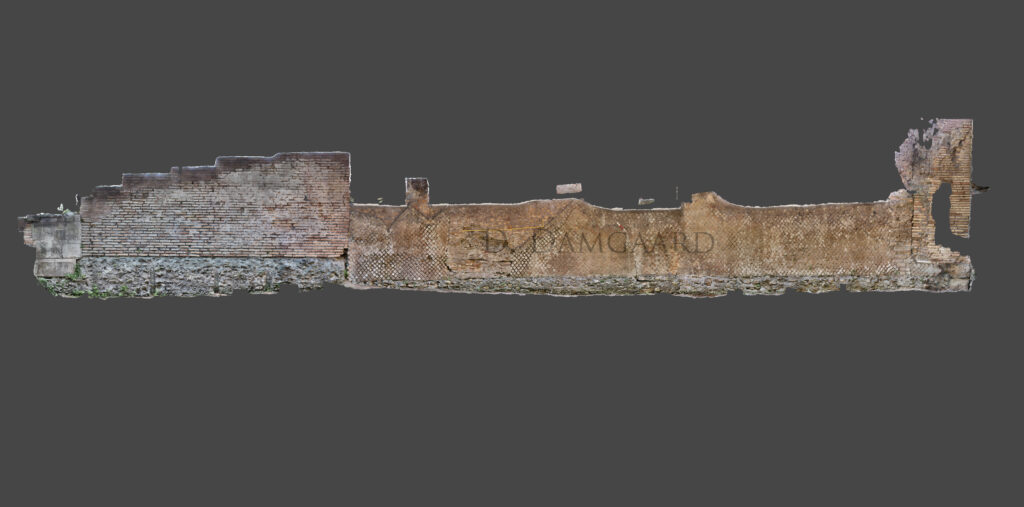
During excavations conducted in the southern half of the Forum, several predecessor structures were found. They all date from the late 6th or early 5th century BCE until the Late Republican period. All these structures are currently being analysed and set in contexts with each other. This is done through archival studies including photos and diaries.
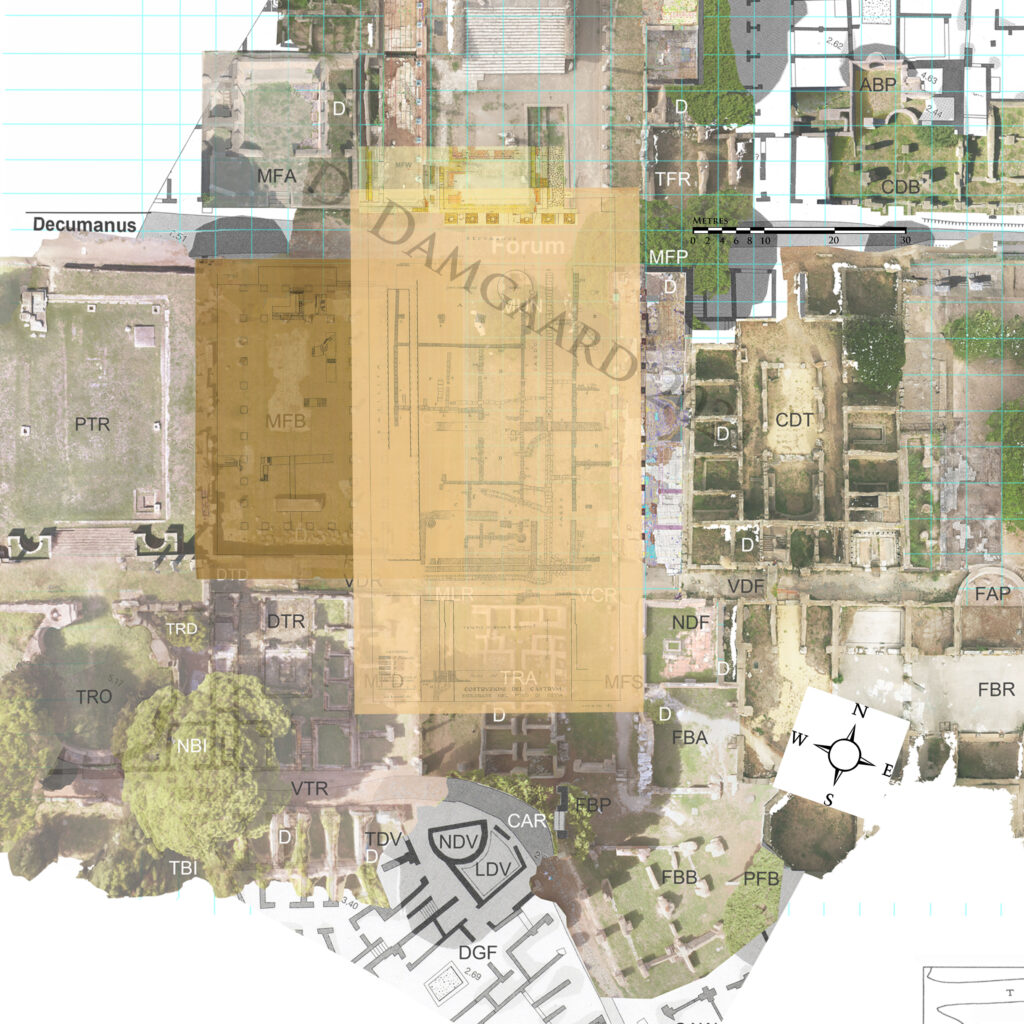
Nevertheless, the latest phase of these structures has already been interpreted by several scholars as being part of the first Forum of Ostia. They are constructed in opus caementicium and consists of only fundaments. The walls have been cut off, when the Temple of Roma and Augustus was built and the level of the plaza had to be made.
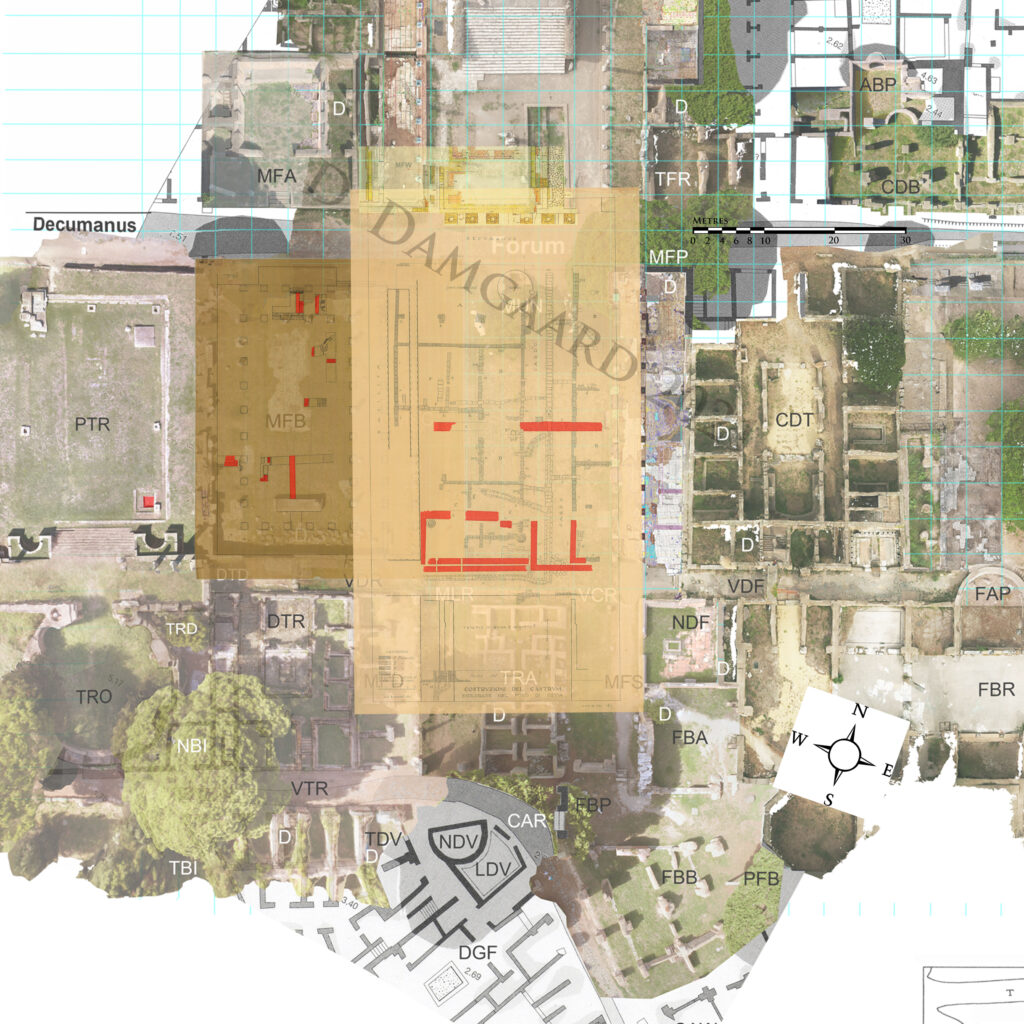
This structure has been identified by Ricardo Mar as a porticoed boundary of the Forum. However, comparing the fundaments to Fanum, Cosa and the Market Basilica in Ephesos, it is possible to identify the structure as being some kind of basilica. If we further assume that the opus reticulatum wall from the so-called Curia is that of a public building, such as a Curia or Comitium, we might have the first sketches of a Forum in Ostia.
Another observation, which deserves attention, is the central round monument, the Mundus. A new theory put forward by D. Damgaard concerns a Late Archaic temple, which would have been positioned on the later southern Forum’s plaza. The temple can be traced through Structure A and Walls i and h. This hypothesis will be published soon, but you can read about the architectural terracottas here. The temple would have been placed directly in connection with the oldest pozzo (well) inside the Castrum. Though, it should be noted that the proposed temple pre-dates the Castrum, and was most likely demolished with the construction of the Castrum or shortly thereafter in the late 4th or early 3rd century BCE. It is unlikely that the temple existed after, since its pronaos was reused as either a principia or praetorium, when the Castrum was in use and the level around was raised.
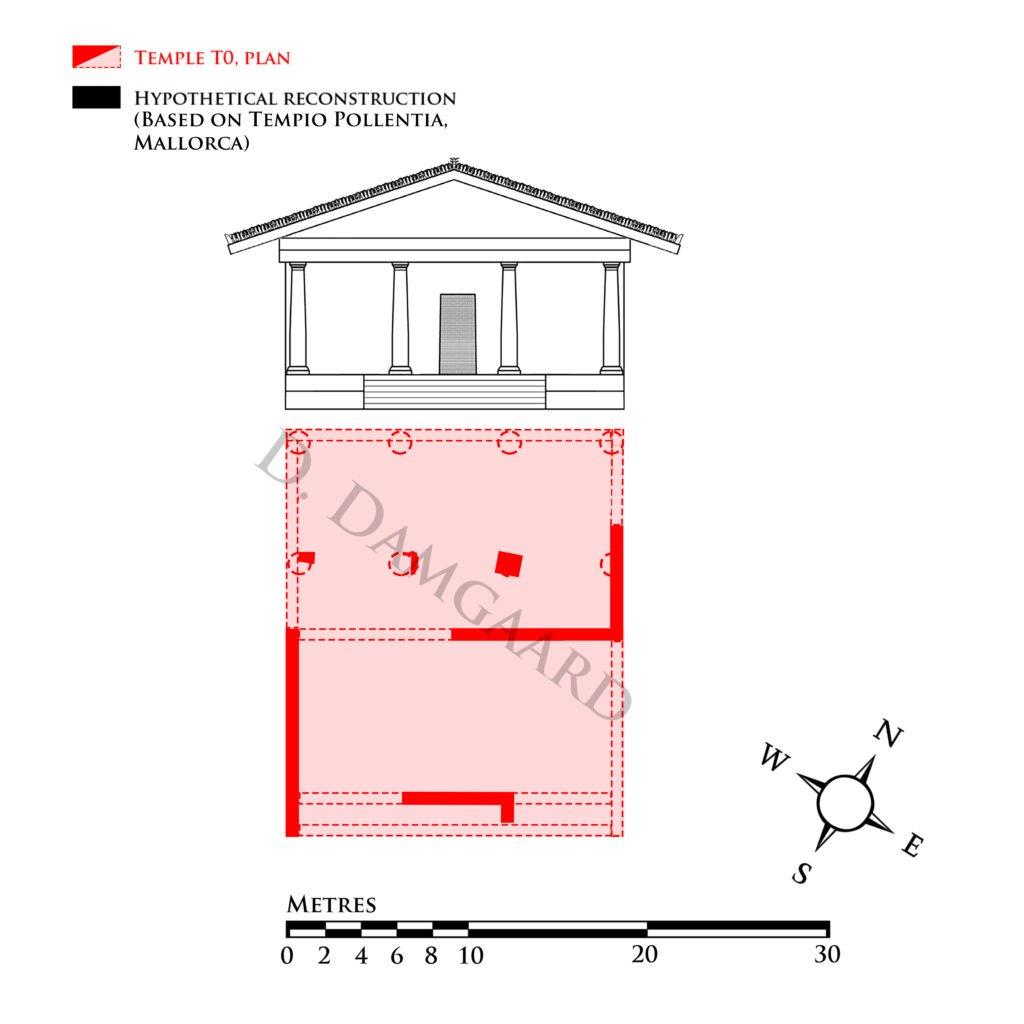
Nonetheless, it is assumed that there would have been a water source in the area, when the temple as constructed and thus also when the Castrum was built. It makes most sense to create a military fort, where you can access water without having to leave the comfort behind the walls. The water was thus most likely sacred, and since we know that a monumental nymphaeum was built in Imperial times, it is reasonable to assume that with the creation of the first Forum in Ostia, this also played an important role. The deity of the Late Archaic temple is unknown, but a candidate could be Hercules Aqua Salvia, since fragments from a marble altar dedicated to him was found not far from the Mundus. It is therefore a possible scenario that the nymphaeum and its potential predecessors and the temple were dedicated to this deity.
If we combine all the abovementioned, we might have one of the first fora of Ostia with a Curia/Comitium, a Basilica, a Capitolium, a smaller temple and a monumentalised nymphaeum going all the way back to the foundation of the Late Archaic temple, which could explain the position of the Castrum in the first place, and thus the position of the first Forum of Ostia.

You can find more here.
